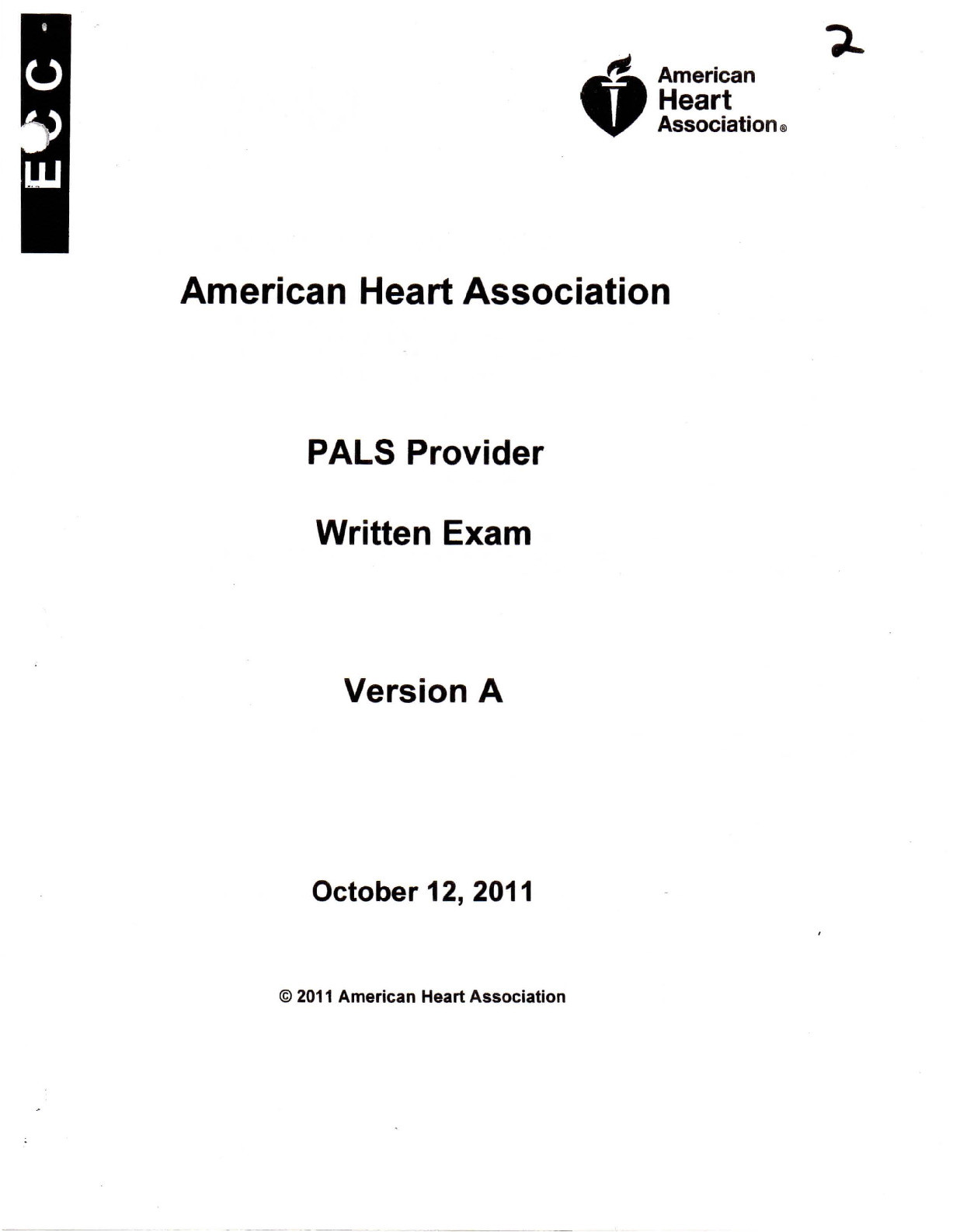All study resources > PALS Provider Exam Version A and ANSWERS (Nursing)
PALS Provider Exam Version A and ANSWERS
1. A 5-year-old child presents with lethargy, increased work of breathing, and pale color. The
primary assessment reveals that the airway is open and the respiratory rate is 30/min, with
crackles heard on auscultation. The cardiac monitor shows sinus tachycardia at a rate'of 165/min.
The pulse oximeter displays an oxygen saturation of 95% and a pulse rate of 93/min. On the basis
of this in
...[Show More]
1. A 5-year-old child presents with lethargy, increased work of breathing, and pale color. The
primary assessment reveals that the airway is open and the respiratory rate is 30/min, with
crackles heard on auscultation. The cardiac monitor shows sinus tachycardia at a rate'of 165/min.
The pulse oximeter displays an oxygen saturation of 95% and a pulse rate of 93/min. On the basis
of this information, which of the following provides the best interpretation of the oxygen
saturation of 95% by pulse oximetry?
A. Reliable; no supplementary oxygen is indicated
B. Reliable; supplementary oxygen should be administered
C. Unreliable; no supplementary oxygen is indicated
D. Unreliable; supplementary oxygen should be administered
2. A 3-year-old child was recently diagnosed with leukemia and has been treated with
chemotherapy. The child presents with lethargy and a high fever. Heart rate is 195/min, respiratory
rate is 36/min, blood pressure is 85/40 mm Hg, and capillary refill time is less than 2 seconds.
What is the child's most likely condition?
A. Septic shock
B. Hypovolemic shock
C. Significant bradycardia
D. Cardiogenic shock
3. A 2-week-old infant presents with irritability and a history of poor feeding. Blood pressure is
55/40 mm Hg. What term describes this infant's blood pressure?
A. Hypotensive
B. Normal
C. Hypertensive
D. Compensated
4. During a resuscitation attempt, the team leader orders an initial dose of epinephrine at 0.1
mglkg to be given 10. What should the team member do?
A. Administer the drug as ordered
B. Administer 0.01 mg/kg of epinephrine
C. Respectfully ask the team leader to clarify the dose
D. Refuse to administer the drug
PALS Provider Written Exam Version A, October 12,2011
© 20 II American Heart Association
2
C)
)
American
Heart
Association ®
5. Which of the following is a characteristic of respiratory failure?
A. Inadequate oxygenation and/or ventilation
B. Hypotension
C. An increase in serum pH (alkalosis)
D. Abnormal respiratory sounds
6. Which of the following is most likely to produce a prolonged expiratory phase and wheezing?
A. Disordered control of breathing
B. Hypovolemic shock
C. Lower airway obstruction
D. Upper airway obstruction
7. A 4-year-old child presents with seizures and irregular respirations. The seizures stopped a few
minutes ago. Which of the following most likely to be abnormal?
A. Vascular resistance
B. Pulse rate
C. Lung compliance
D. Control of breathing
8. What abnormality is most likely to be present in children with acute respiratory distress caused
by lung tissue disease?
A. Decreased oxygen saturation
B. Stridor
C. Normal respiratory rate
D. Decreased respiratory effort
9. An alert 2-year-old child with an increased work of breathing and pink color is being evaluated.
Heart rate is 110/min, and respiratory rate is 30/min. What would best describe this patient's
condition?
[Show Less]
